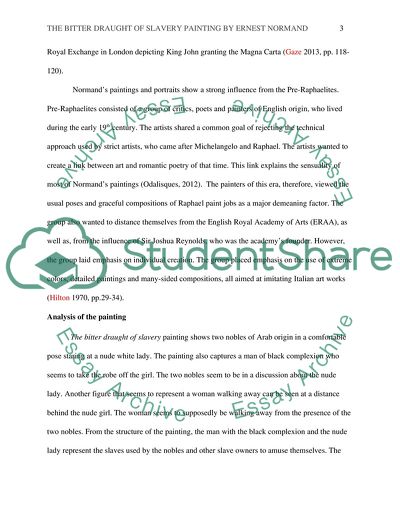Cite this document
(The Bitter Draught of Slavery by Ernest Normand Literature review Example | Topics and Well Written Essays - 1750 words, n.d.)
The Bitter Draught of Slavery by Ernest Normand Literature review Example | Topics and Well Written Essays - 1750 words. https://studentshare.org/history/1809957-the-bitter-draught-of-slavery-the-paint-by-ernest-normand-art
The Bitter Draught of Slavery by Ernest Normand Literature review Example | Topics and Well Written Essays - 1750 words. https://studentshare.org/history/1809957-the-bitter-draught-of-slavery-the-paint-by-ernest-normand-art
(The Bitter Draught of Slavery by Ernest Normand Literature Review Example | Topics and Well Written Essays - 1750 Words)
The Bitter Draught of Slavery by Ernest Normand Literature Review Example | Topics and Well Written Essays - 1750 Words. https://studentshare.org/history/1809957-the-bitter-draught-of-slavery-the-paint-by-ernest-normand-art.
The Bitter Draught of Slavery by Ernest Normand Literature Review Example | Topics and Well Written Essays - 1750 Words. https://studentshare.org/history/1809957-the-bitter-draught-of-slavery-the-paint-by-ernest-normand-art.
“The Bitter Draught of Slavery by Ernest Normand Literature Review Example | Topics and Well Written Essays - 1750 Words”. https://studentshare.org/history/1809957-the-bitter-draught-of-slavery-the-paint-by-ernest-normand-art.


